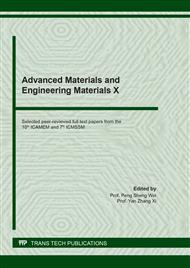p.464
p.473
p.480
p.485
p.501
p.506
p.512
p.519
p.525
Effect of Sensitization Time on Intergranular Corrosion of 347H Stainless Steel
Abstract:
In this paper, 347H stainless steel of three situation of solution, primary and secondary stabilizing with 0, 12, 24, 48 and 72 h accelerated sensitization heat treatment. The change of sensitization degree with time was studied by metallographic test, double-loop electrochemical potentiodynamic reactivation (DL-EPR) test, intergranular corrosion test and microscopic morphology observation. The result shows that the sensitization degree of the solution material increases rapidly and reaches the maximum value after 12h sensitization heat treatment. After that, it still belonged to severe sensitization situation, but the index gradually decreased. After stabilizing heat treatment, the sensitization degree of the material is lower than the situation of solution. After heat treatment for 48h, the material located on “possible sensitization” range, and the sensitization degree of the secondary stabilized material was always lower than is of the primary. It indicates that the sensitization of materials can not be completely inhibited by stabilizing heat treatment, and other anti-corrosion measures should be considered.
Info:
Periodical:
Pages:
506-511
Citation:
Online since:
November 2021
Authors:
Price:
Сopyright:
© 2021 Trans Tech Publications Ltd. All Rights Reserved
Share:
Citation:


